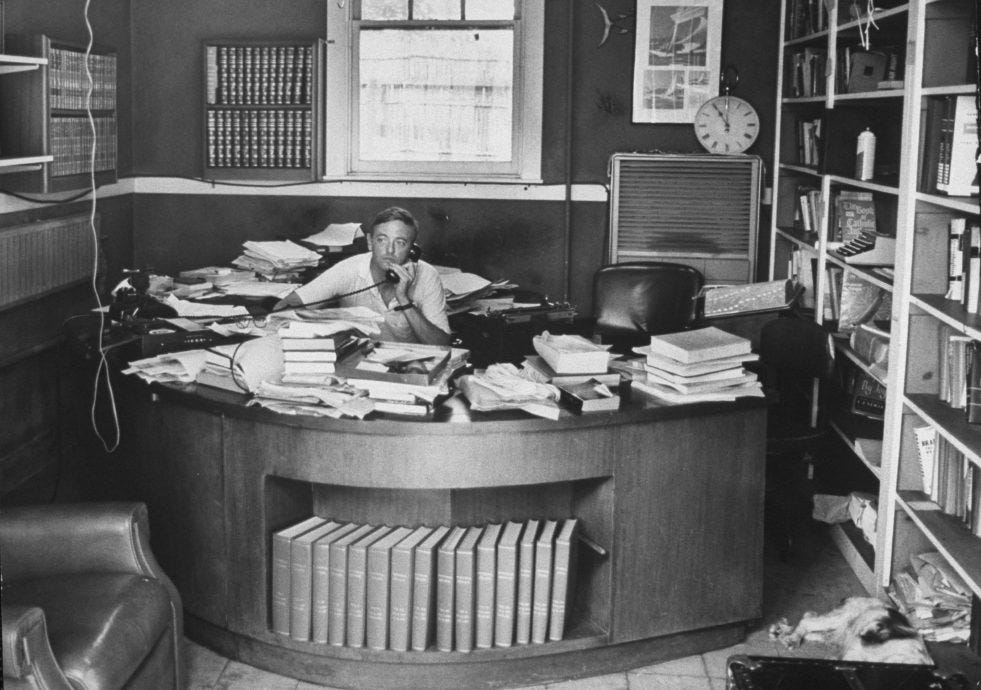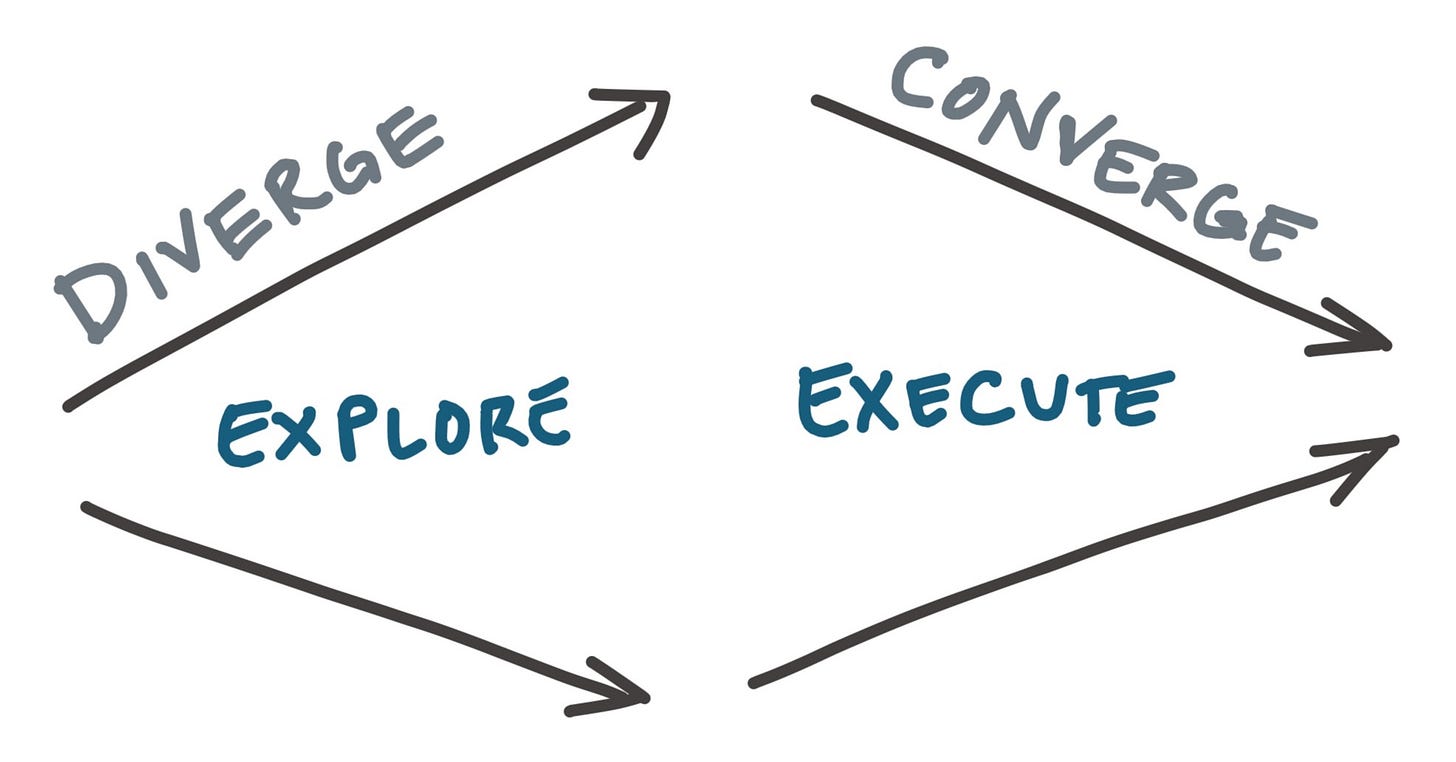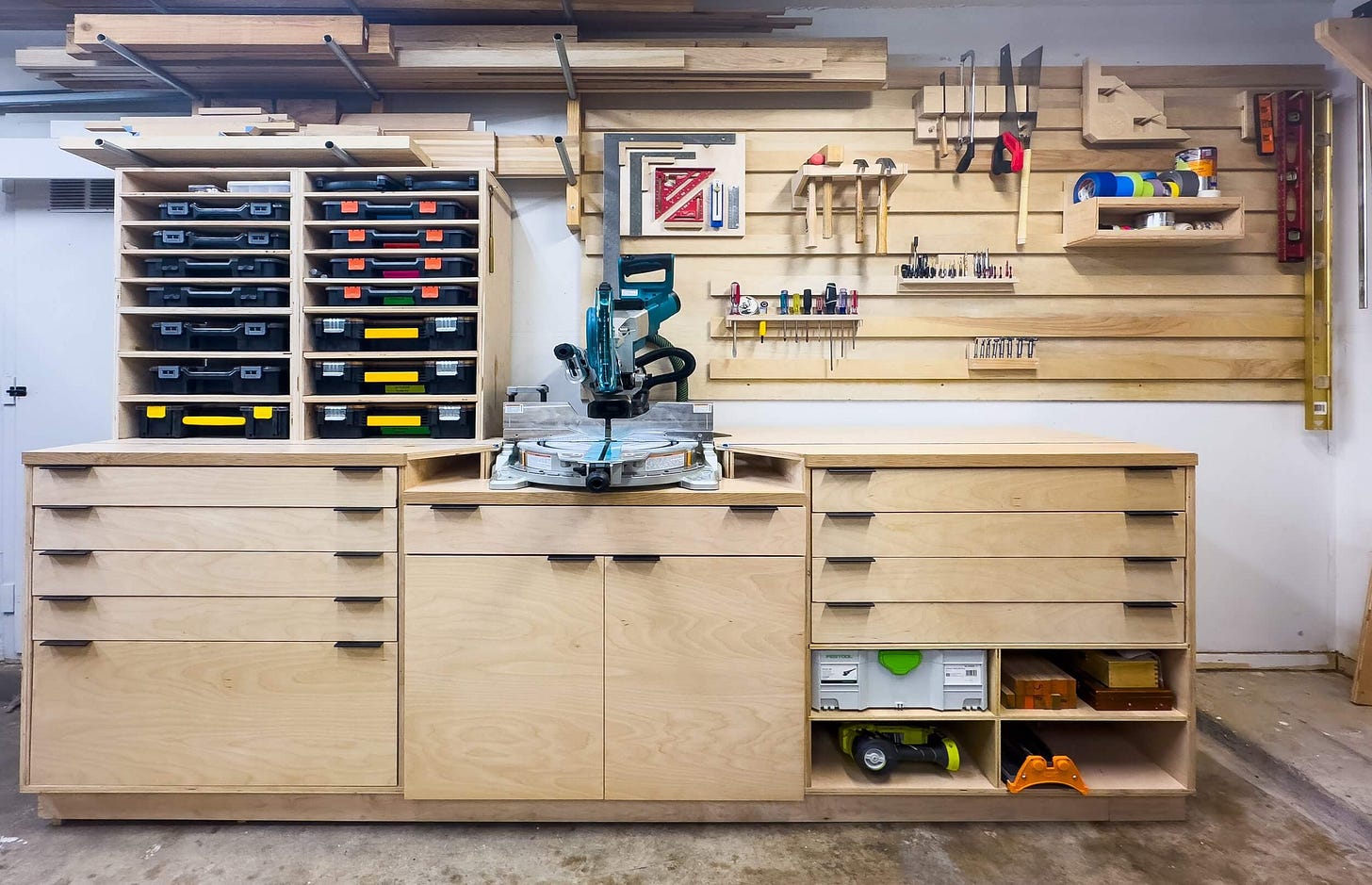Messy workspace, tidy workspace: two modes of creativity
What your workspace reveals about your creative process
There are prolific people who do their work in messy, cluttered spaces, their desks or workbenches a riot of papers, tools, sketches, and half-baked ideas. There are others that require tidiness and rigid organization. Everything in its place, each paper, pen, and tool in a zen-like ideal position. Each mode can produce creative output: some preferring order, others thriving in chaos.
How can we think about what's going on here? What drives these two distinctly different methods of productivity?
Neither is right nor wrong. If interesting output appears, the system is working!
But I'm curious about the psychology of why some kinds of people can be productive sitting behind a mountain of papers and books, while others need that sense of pristine organization. If you're a messy creator, what can you learn from the organized? If you feel overwhelmed by scattered notes and tools laying around, why are others so productive even surrounded by stacks of books?
We find creators of both stripes. I think the difference is not about which is the "right" way to think about productivity, but rather how the two cultivate that initial creative impulse into fully realized work.
Mess and order each have their place in creativity, and I think there's useful tension between the two.
The chaotic space generates serendipity, making visible the spontaneous connections between discrete ideas. When you're surrounded by fragmented thoughts and an assortment of tools, you may notice connections otherwise obscured in the organized drawer of neatly filed folders. It's like having the tools and elements in an active memory buffer, ready and within reach to bring into your work. Seeing two unrelated books in a stack next to you might spark the occasional "I wonder if..." question that leads down a trail to interesting insight.
The tidy space, in contrast, channels its user to discipline, and a methodical focus on the current task. Once you've captured the bug and know which direction you're headed, there's "nothing to it but to do it", as they say. Piles of books and Post-it notes laying around might lure you off the trail. Distractions are the enemy of execution.
One mode favors divergent work: exploring and searching for novel connections. The other convergence: after finding the spark of insight, the ability to steer the work toward completion.
The two modes are complements.
A boisterous mind might lack the discipline to push an idea to fruition. And the completely ordered one may miss the spark of originality, never noticing the unexpected connections.
When we see a Bill Buckley producing multiple insightful columns per week while editing a national magazine, all from behind a scattered mess of material, we're seeing a mind that has a talent for finding the interesting connections, but is still able to channel his attention toward execution, even with 1,000 rabbit trails in front of him.
Or picture a Jony Ive, working in his meditative calm white room. Clearly he was able to generate a creative spark or two without working in a cluttered studio.
Perhaps each type of creator is able to compensate by doing the divergent or convergent modes of work inside their head, rather than letting their head spill into their environment.
My tendencies depend on the type of activity. When it comes to knowledge work, I feel a gravitation toward the organized end of the spectrum — not all the way to sterile-operating-room aesthetic, but "together" enough that I don't feel like I'm drowning in minutiae.
On the other hand, with something like the hands-on work in the woodshop, I'm fine working in the clutter, particularly in the midst of an active project.
Likely with different types of work, I'm differently able to compensate for divergence or convergence without reorienting my whole space around each.
The two modes balance each other; you can use both to your benefit. Each has its downsides compensated for by the other's advantages.
For a messy creative, there's risk that the chaos becomes overwhelming, leading to paralysis or loss of focus. They might have brilliant ideas but struggle to execute them due to the disorder.
For the tidy, the press for order may be stifling, preventing the emergence of interesting ideas. They might produce polished work but lack the spark of originality.
The two types have fundamentally different relationships between their physical space and mental processes.
The person with a cluttered workspace isn't just avoiding organization; they're using their physical environment as an extension of their thinking process. Their desk becomes a living map of their thought patterns, with each scattered item representing a potential connection or idea. Rather than imposing structure, they allow organic patterns to emerge, trusting that meaningful relationships will surface from the apparent disorder.
In contrast, those who maintain an organized workspace see their environment as a tool for focus and execution. By eliminating visual noise and arranging their tools deliberately, they create conditions where their mind can work with minimal distraction. Their workspace becomes a reflection of a methodical approach — a controlled environment where ideas can be developed with intention and precision.
The difference lies not in the presence or absence of creativity, but in how creativity is approached. One embraces serendipity and unexpected connections, the other values methodical development and focused execution. Both serve the creative process, just through different pathways.
Next time I'm either feeling uninspired about what to make, or overwhelmed by the chaos around me, I'll try and think about which mode would be more fitting for the goal. Am I in divergent, exploratory mode? Or do I have all the right tools and I need to converge on the target?
And maybe I won't always beat myself up for my messy workspace.
Check out an earlier post about the relationship between our minds and our environments, and how the two influence one another:
Shaping Our Environments
I regularly watch former MythBusters host Adam Savage's YouTube channel. In most of his videos, you'll see him in "The Cave" — his chaotic workspace packed to the gills with tools, hardware, memorabilia, and half-made projects. In his periodic shop infrastructure vlogs, he's fond of saying "a shop is never finished". Or "it's a constant work-in-progress…






